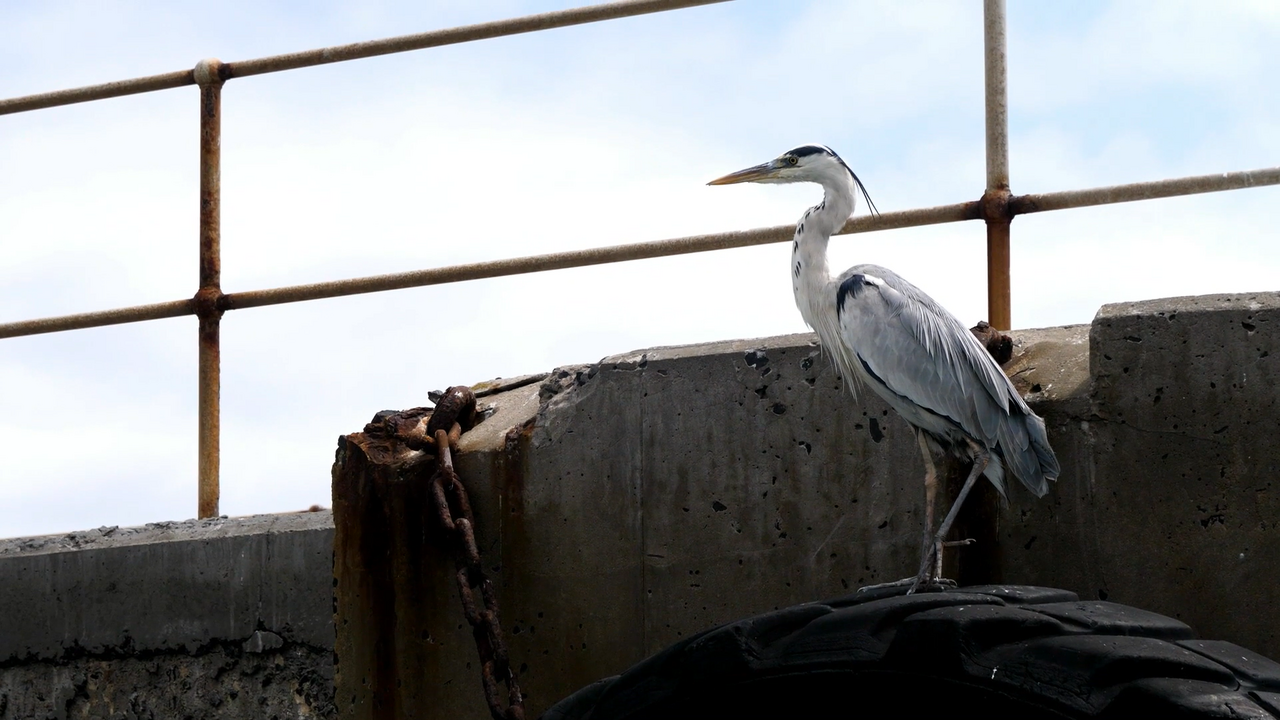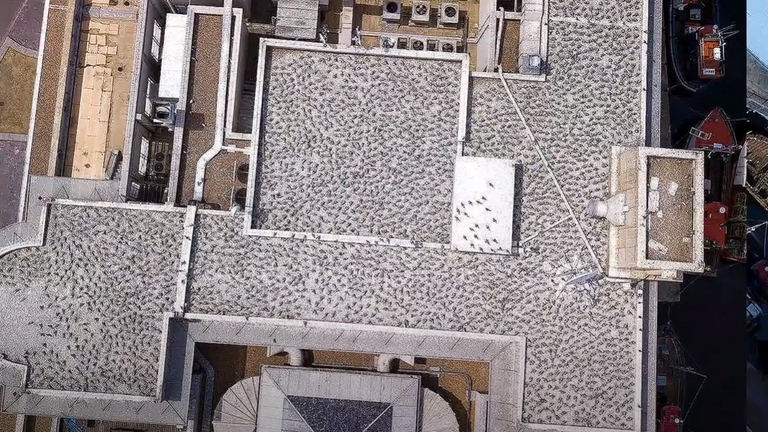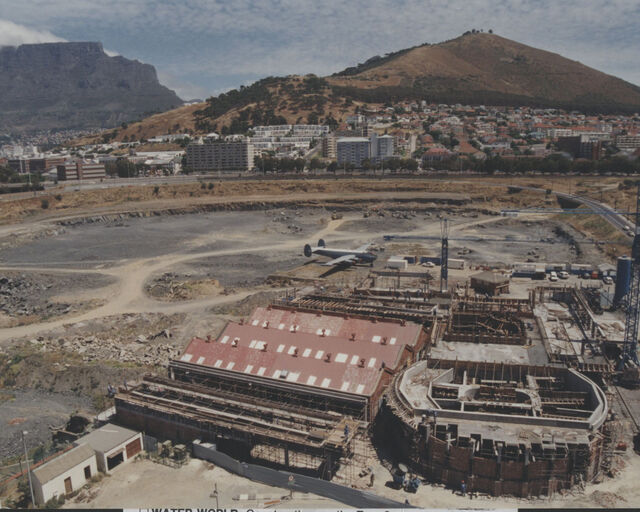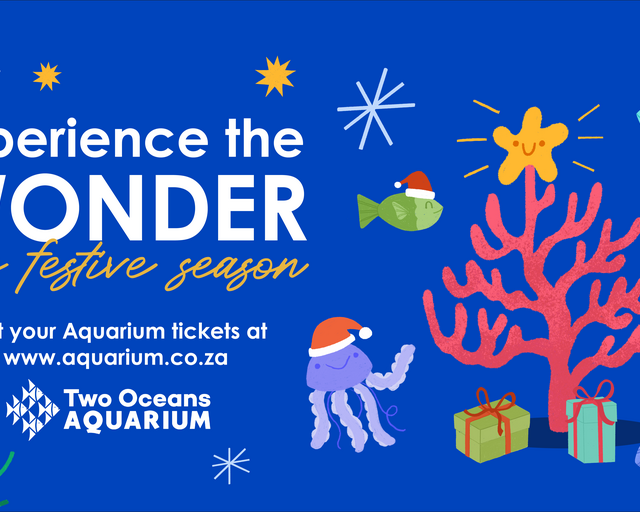The Two Oceans Aquarium Foundation and V&A Waterfront's Marine Wildlife Management Programme was recently featured on 50|50 for the work with local urban wildlife, particularly colonial coastal birds. Let's take a look at what the production team learned:
Cape Town Harbour is one of the biggest ports in Africa on one of the world’s busiest trade routes. It is also home to many different species of marine wildlife such as the increasingly famous Cape fur seal. However, while the harbour’s marine mammals often hog the limelight, the area is also home to countless seabirds, which present unique challenges in an urban environment.
In 2017, a large flock of swift terns (Thalasseus bergii) arrived and began nesting in the area, without many people knowing about it. These birds are large with a white forehead strip, neck, and underparts. They are common in the south Western Cape and are usually found in colonies along the coast. However - these sea birds chose this particular urban environment due to the fact that the Cape Town harbour is a fishing exclusion zone – which means there is no commercial fishing being done, and ultimately, there is an abundance of food for the birds.
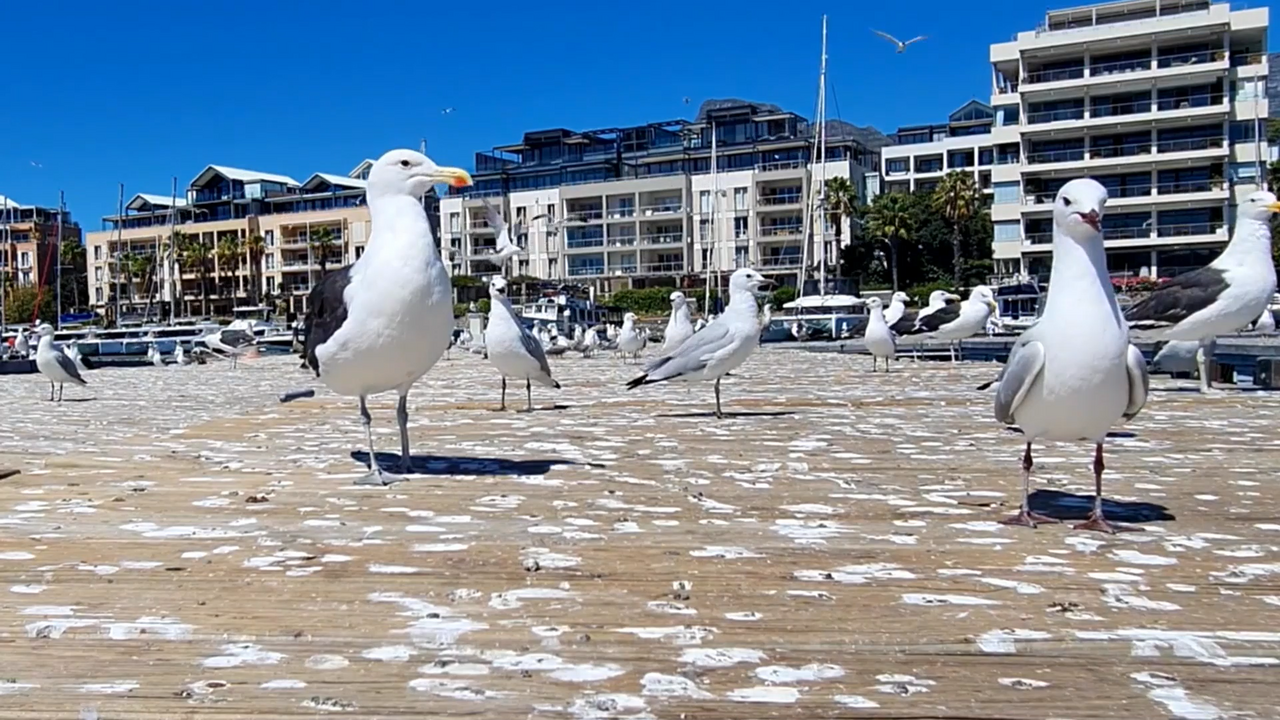
Seabirds like these naturally nest on islands, on the ground, as there is no real threat from predators. They typically visit these islands for long enough for their chicks to hatch, grow up, and then fly off. However, in a built environment, there are no isolated islands to nest on – so the terns choose the next best thing: flat rooftops. The stone chips commonly used to secure waterproof materials on rooftops are perfect for nesting, as the birds easily create little depressions in which to lay their eggs.
This comfortable environment eventually saw the size of the colonies increase. Unfortunately, the growing density of the colonies resulted in the spread of H5N8 avian flu – a huge infection risk among colonial seabirds. Something had to be done for the well-being of these colonies.
The aim was not to rid the V&A Waterfront area of these birds, but rather to split the large colonies up into smaller ones, with each one inhabiting a different roof. This would help to lower the risk of any infectious diseases spreading amongst the birds. The best way to do this was to make the rooftops undesirable – by means of bird wires. The light reflected off these wires deters the birds, and, if they do decide to come down and their wings touch the wires, they quickly decide to fly back up again.
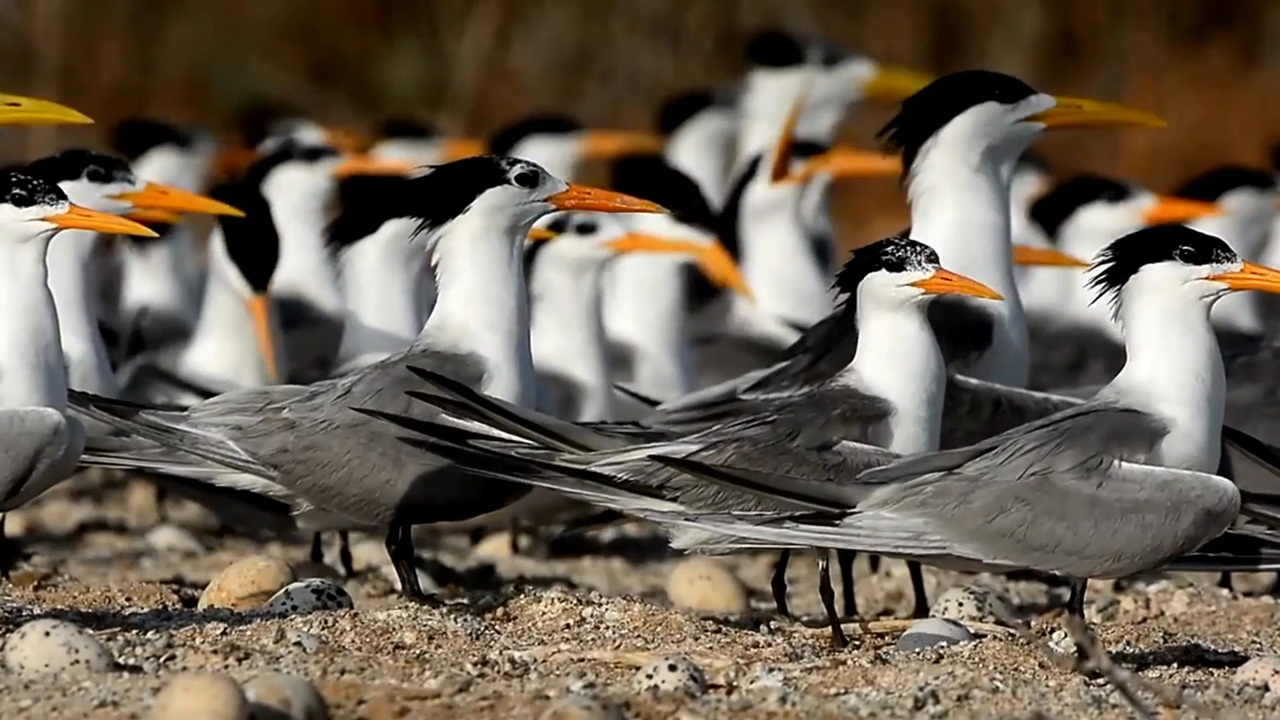
No sooner had the tern issue been resolved when another issue involving the Cape cormorant (Phalacrocorax apensis) arose. Whenever it rained, these birds seemed to get entangled in plastic pollution. So, what was the connection?
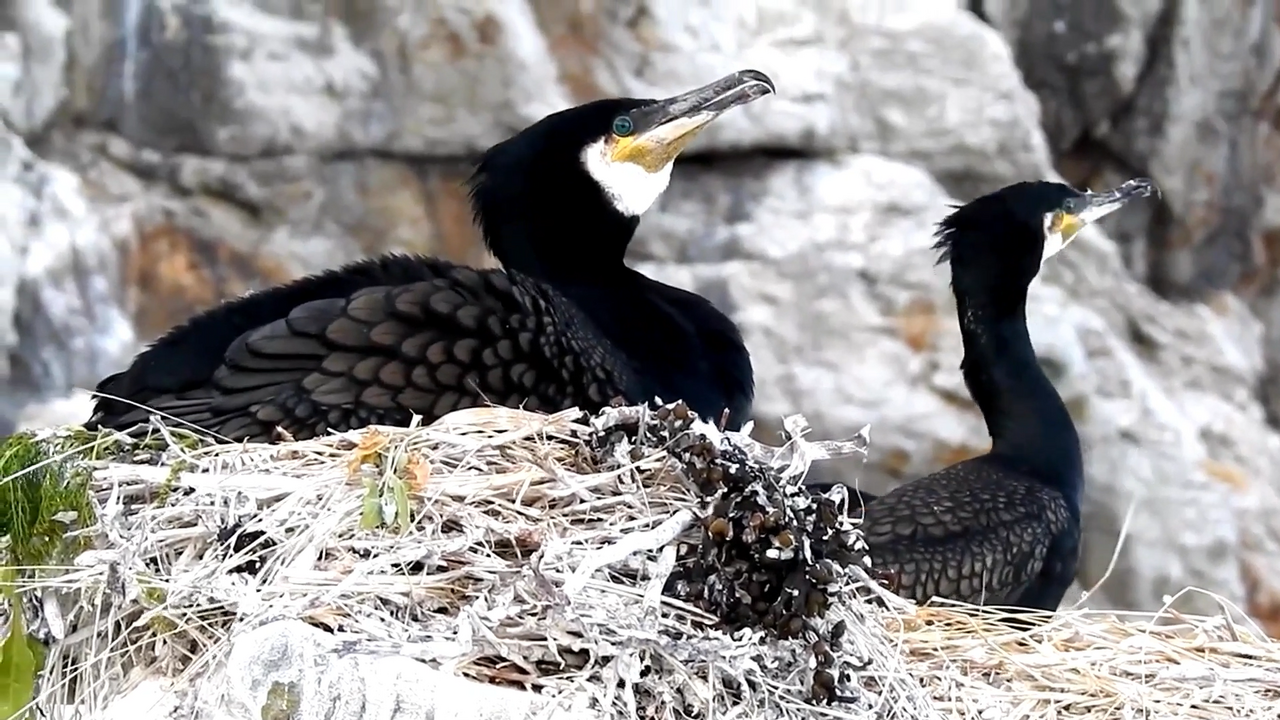
Cormorants are endemic to the coasts of Africa and typically nest on islands, on the ground. They build their nests from surrounding natural materials. These nests are generally around 15cm thick, and 35cm in diameter. In these nests, they will lay two eggs and raise two chicks per season. However, the cormorants in the V&A Waterfront are not in their natural environment and are not even on the ground, instead nesting in sheltered nooks and alcoves. They collect whatever they find around them to construct their nests. In the urban environment, the materials they find usually consist of rope, fishing line, fishing net, cable ties, etc. Essentially, their nests are built from plastic junk.
Each year, these cormorants build their new nest on top of the old ones – so as you can imagine, it begins to look like a layered cake of plastic. After completing studies on these nests, our Foundation’s marine wildlife specialists found that more than 75% of these nests were made from artificial materials – with the bulk of them being plastic.
It’s important to understand that rivers, combined with winds and rain, connect many of the areas in Cape Town to the sea. So, whether you live near the coastline or inland, whatever you discard may still end up in the sea, affecting marine wildlife. The adage “All drains lead to the ocean” is perfectly true! Our rivers and drainage systems run into quite a few inlets around Cape Town harbour. Therefore, the waste items that blow into the rivers or streams enter the harbour and come into contact with these cormorants and many other species, often with deadly consequences for the animal.
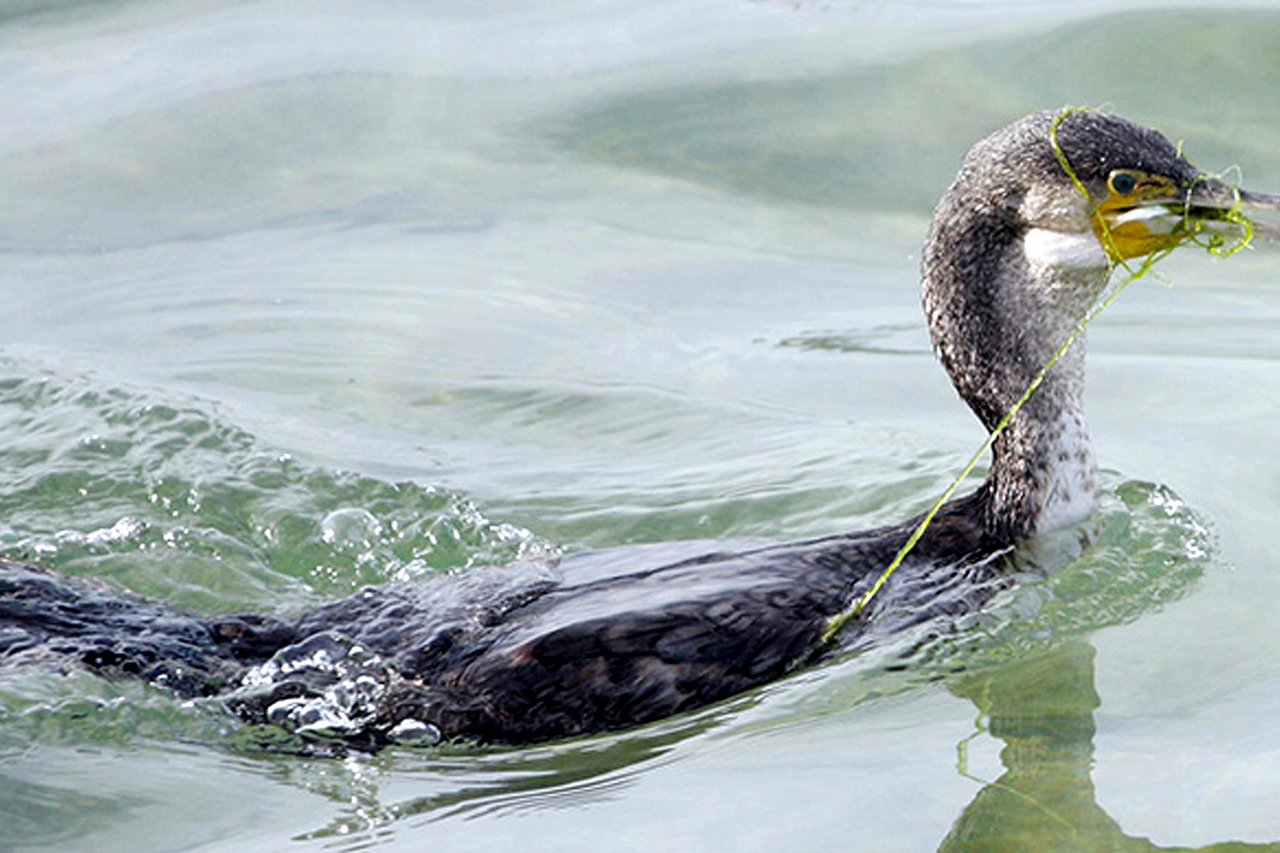
The V&A Waterfront, along with the Two Oceans Aquarium Foundation, aims to help remove pollution and keep the waters as safe as possible for the wildlife that have chosen to live here. Two boats patrol the waters and clear out as much of the waste as possible, and a team of dedicated staff sort and dispose of all the waste appropriately. In addition, Wildlife Monitors, Brett Glasby and Claire Taylor are constantly monitoring the harbour for entangled seabirds and seals.
Waste, and how we dispose of it, is clearly a huge contributing factor to the health and well-being of marine life in the waterfront area. Our actions – or lack thereof – directly affect the environment that these animals inhabit. Thus, we are responsible for ensuring that waste is disposed of correctly and kept out of stormwater drains, rivers, and the ocean. Let’s keep our environment safe for all who inhabit it.
